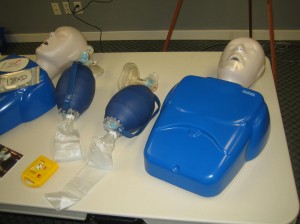CPR training in Las Vegas CPR is the best you will find throughout the city. Other providers are much more expensive but to do not the same high quality training like Las Vegas CPR. Students can get training for either Basic Life Support or Advanced Life Support. Programs are tailored especially for a specific group of students, either the general public – people who aren’t necessarily associated with healthcare – and healthcare providers. ALS programs are typically only taken by healthcare professionals such as nurses and medical technologists. BLS programs are available for the general public as well as HCPs.
Becoming certified
All programs in Las Vegas CPR are certification programs, where a post-test consisting of a skill and written exam are given to students. Once there exams are passed, certificates are awarded to the rescuer that are valid for 24 months. If the rescuer wants to renew the certification before it expires, re-certification programs are available for some of our classes. These certificates are valid all over the country as well.
Choosing a class
Las Vegas CPR offers trainees, five different training programs. BLS has three programs while ALS has two, not including re-certification counterparts. BLS programs do not have any prerequisites, aside from the third program (BLS for healthcare providers) that has a pre-test that students need to pass. ALS programs on the other hand require students to have a valid BLS for healthcare providers certificate aside from passing the program’s pre-test.
Basic Life Support

Basic Life Support differs from ALS because it focuses on basic skills in giving CPR and managing cardiovascular disorders. While students are introduced to the American Heart Association’s Chain of Survival, a set of guidelines used while giving CPR, only the first three out of five links are focused on in the programs.
- Basic CPR and AED training – Includes basic first aid training, this CPR and AED program teaches students how to adequately give chest compressions and rescue breaths to an unconscious victim. One-person CPR rescue is the focus of this 4-hour program. Certification is optional; students don’t have to take the skills test at the end of the the program.
- Basic CPR and AED training for HCPs – This has a similar curriculum to the first basic CPR program but tailors the topics for healthcare providers. This is 4.5 hours long. A skills test and a written exam are given at the end of the program to certify the trainee as a rescuer.
- BLS for healthcare providers – This program runs for 4.5 hours and introduces trainees to the BLS guidelines from the AHA. Both one-person and two-person CPR is taught in this program. Re-certification programs are available, 4 hours long.
There are two ALS programs: ACLS for adult victims and PALS for pediatric victims.
- ACLS – A 16 hour program completed over 2 days, it teaches how to give CPR to an adult victim in a clinical setting, with CPR equipment and medication. Re-certification is 5-6 hours.
- PALS – Also completed over 2 days, but has fewer class hours that total to 14 hours. Like ACLS, it teaches trainees how to give CPR in a clinical setting, but this time for infants and young children. Re-certification is 6-8 hours long.